If you’re in the IT field, you’re likely familiar with downtime – a major headache.
Discover the significant ramifications, impacts, and effective mitigation strategies like IT support outsourcing in this insightful blog.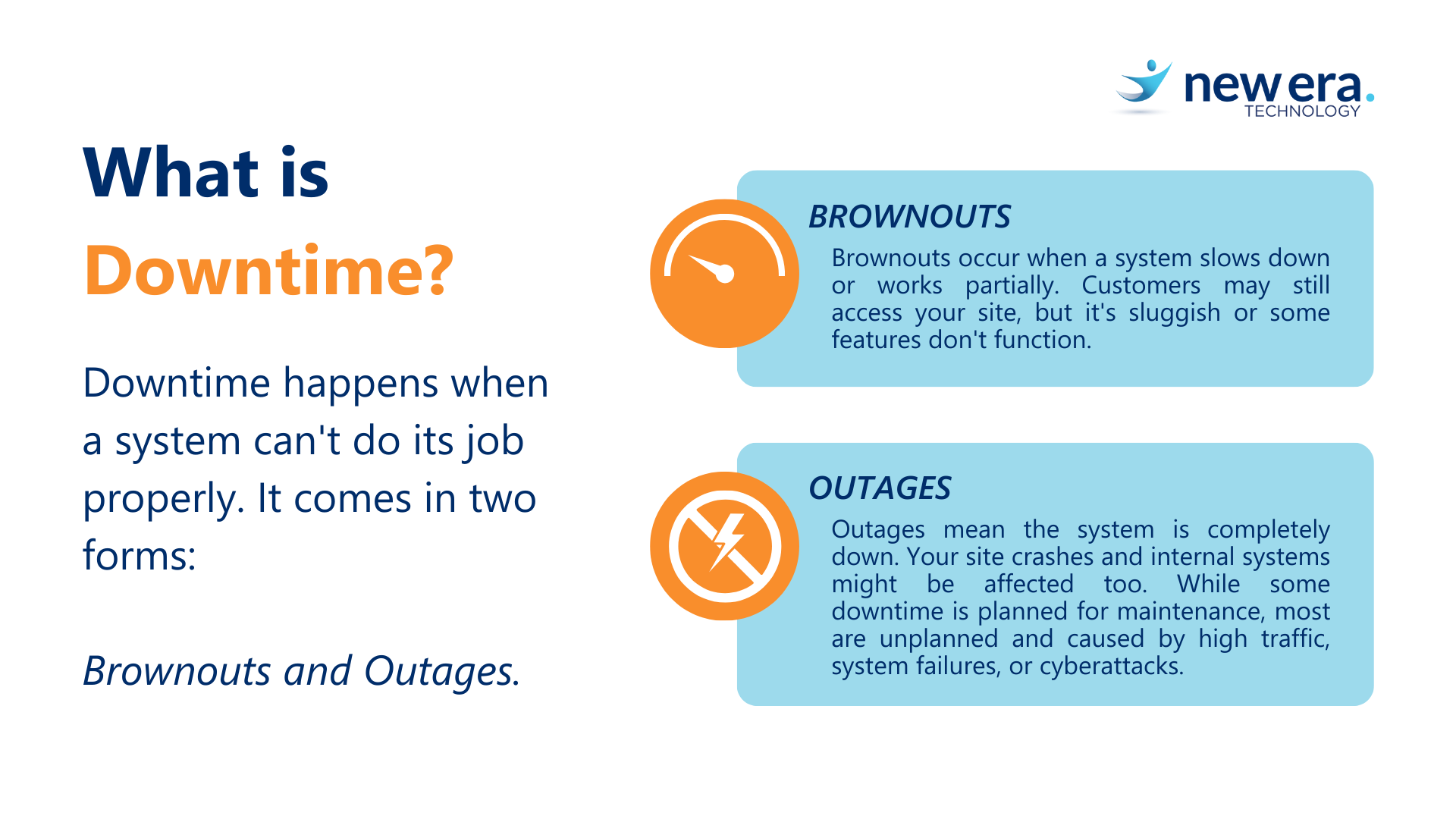
Downtime affects organisations of all sizes and industries, with outages inevitable and costly. Whether you’re a small business or a retail giant, losing customer interest during server downtime can significantly impact revenue. However, there are ways to help mitigate it.
Industries Prone to High-Risk
- Banking and Finance
- Government
- Media and Communications
- Manufacturing
- Healthcare
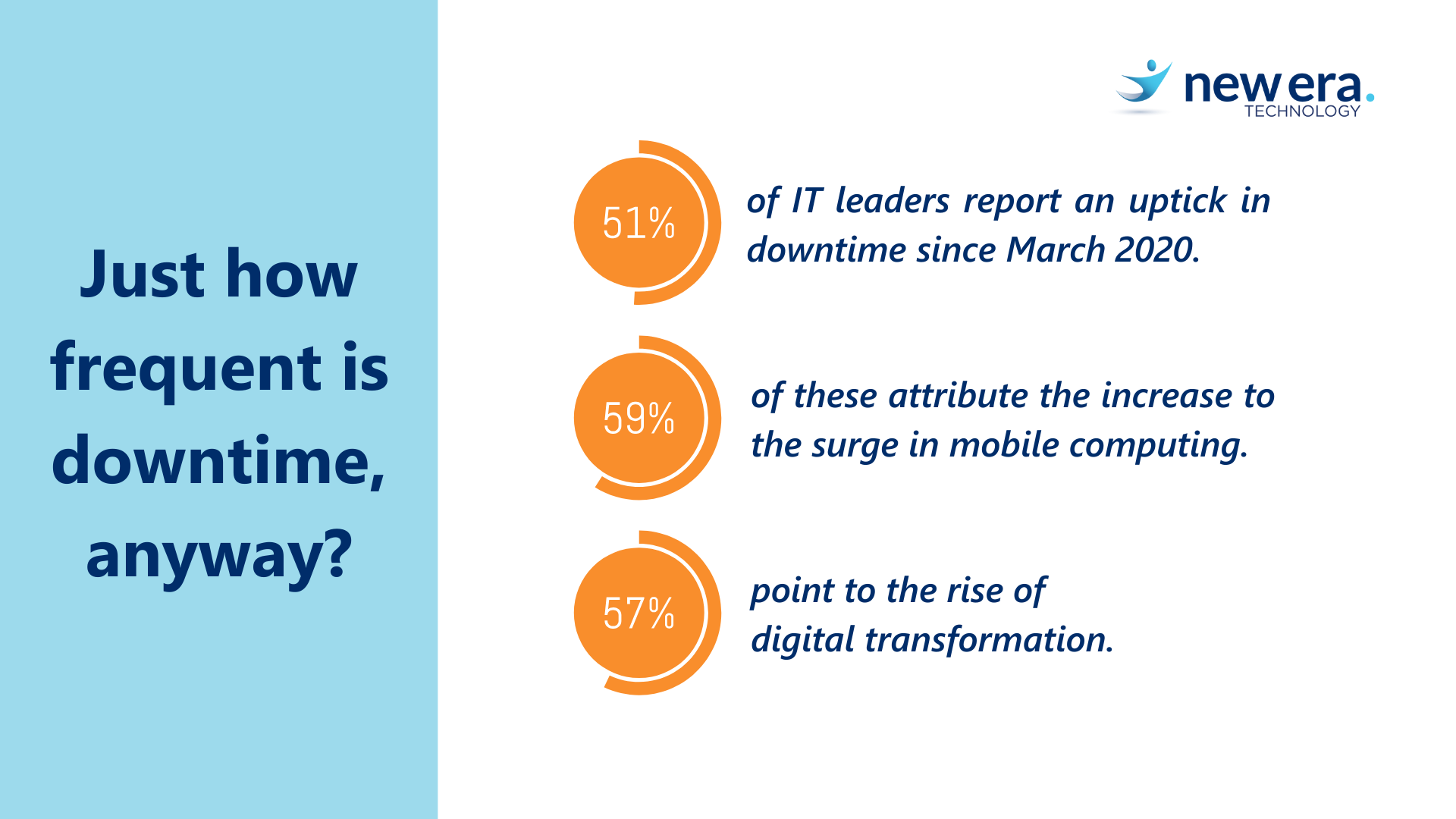
In 2021, Information Technology Intelligence Consulting (ITIC) noted a 2% year-over-year increase in downtime costs. They anticipate this trend to persist as organisations increasingly depend on the Internet for critical business operations. Not only is downtime becoming more frequent, but its costs are also rising.
Downtime Costs: Calculating the Impact on Company Finances
According to Australian Software Development giant Atlassian, you can estimate your company’s downtime costs using this formula:
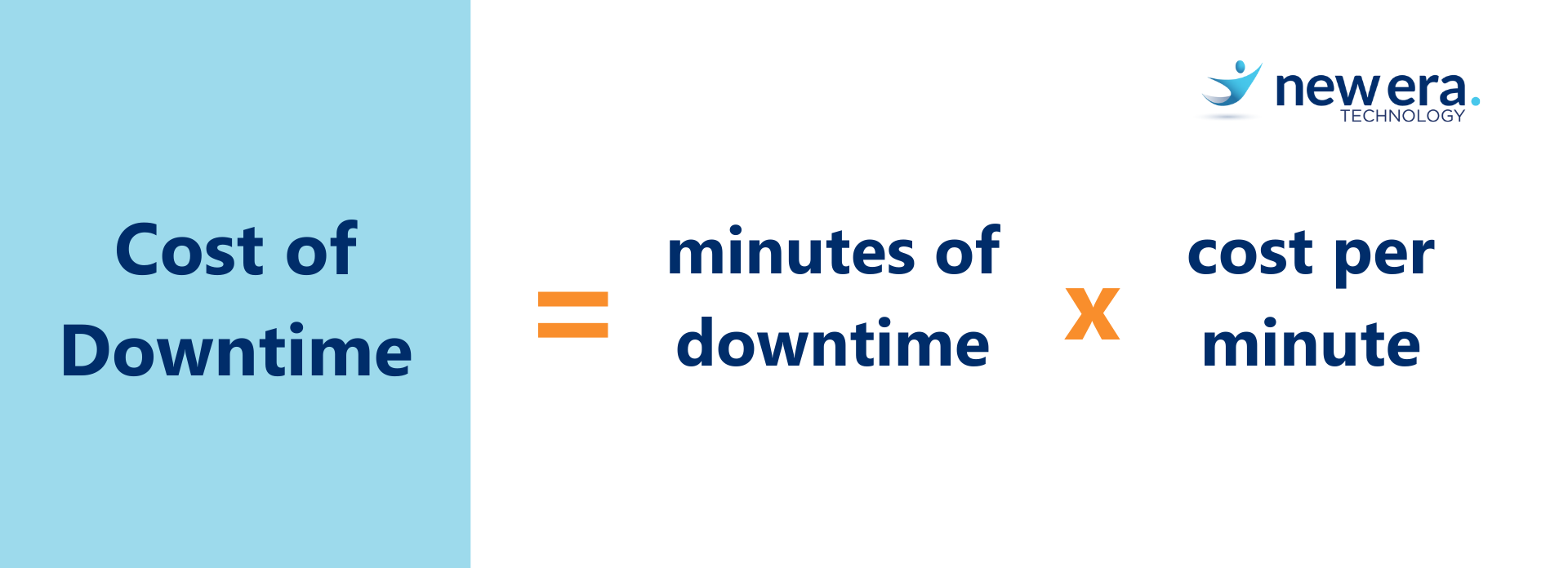
For small businesses, they recommend using $427 per minute, while medium and large businesses should use $9,000 per minute.
Understanding the Impact and True Cost of Downtime on Your Business
Gartner once estimated IT downtime at $5,600 per minute or about $300,000 per hour. Recent studies show this figure has surged to nearly $9,000 per minute.
Adding to the challenge, IT outages and brownouts tend to strike during peak visibility periods, hitting the hardest during your most significant events—a product launch, a flash sale, or promotional activities. This is due to the surge in traffic and sudden spikes in usage, which are frequent triggers for downtime.
Consequently, the financial impact of downtime isn’t solely determined by average hourly revenue but is closely tied to peak hourly revenue.
When Meta experienced their outage, their stock plunged by 5%. This led to a significant hit to Mark Zuckerberg’s net worth, amounting to a staggering $6 billion in just one day. To put this into perspective, this loss exceeds the average lifetime earnings of over 2,000 US citizens—all gone in a single day for one individual.
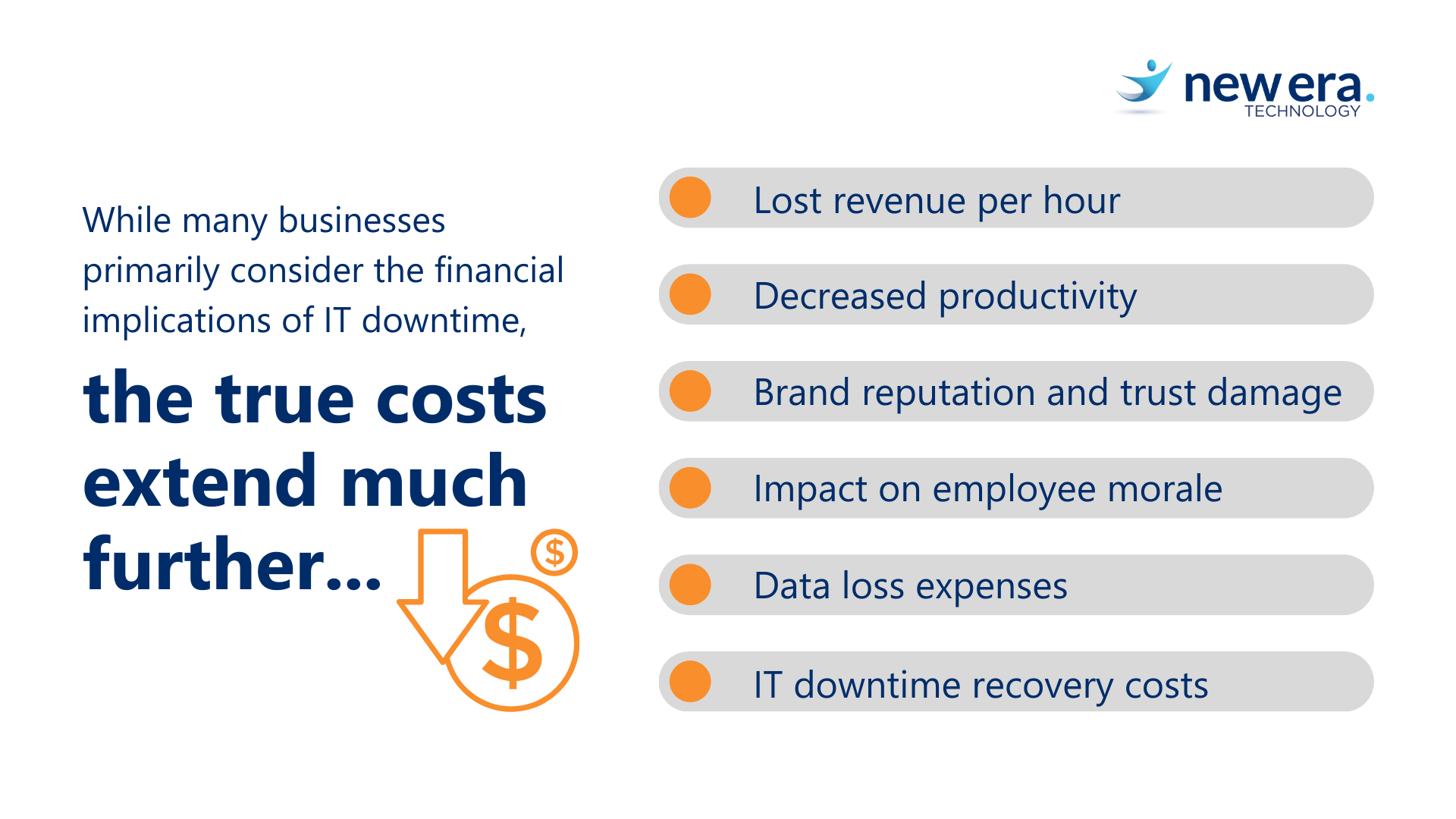
Businesses may need to allocate resources to invest in emergency maintenance or repairs, hire staff, or enlist services to restore operations promptly.
Furthermore, they may face regulatory penalties and legal liabilities, including potential lawsuits.
Moreover, downtime can impact insurance coverage, as some policies may have clauses or exclusions related to downtime or data breaches. Failing to meet the insurer’s requirements due to downtime could result in a loss of coverage.
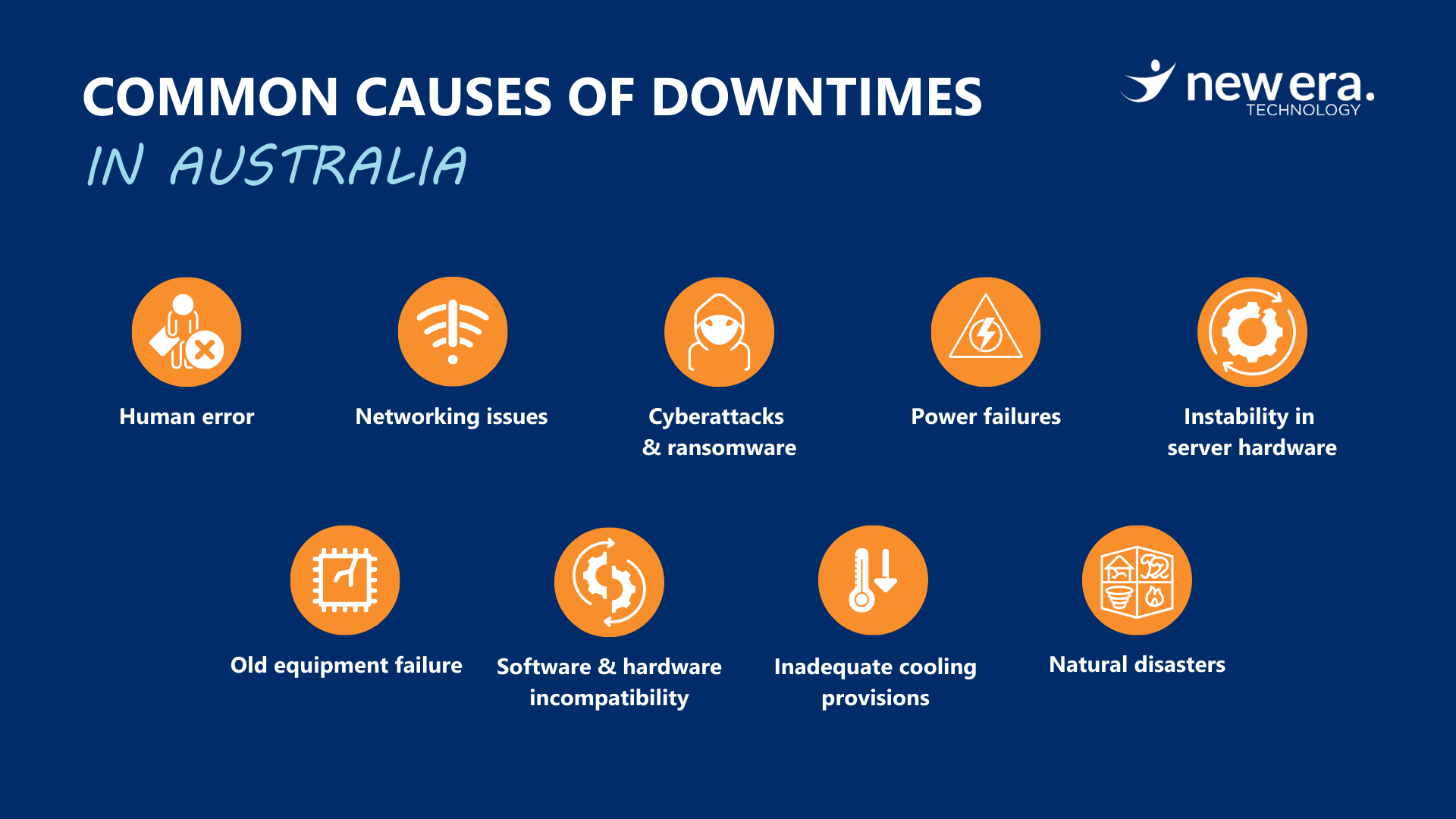
Strategies to Consider for Minimising the Risk of Downtime
- Maintain regular updates and active monitoring of devices
- Monitor server health status and scale servers for traffic spikes
- Provide ongoing employee training
- Conduct regular risk audits of facilities
- Test server backups and
- Assess internet and phone service providers
- Develop comprehensive disaster recovery and data loss prevention plans
Advantages for Organisations When There Is No Downtime
- Increased Revenue, Innovation, and Growth: Unburdened by downtime, organisations can concentrate on innovation and growth initiatives, fostering long-term success and sustainability.
- Reduced Operational Costs: Eliminating downtime mitigates expenses linked to lost revenue, repairs, and recovery efforts.
- Enhanced Reputation: Organisations with minimal downtime cultivate a reputation for reliability and trustworthiness, attracting more customers and opportunities.
- Enhanced Competitive Advantage: Maintaining continuous operations enables organisations to outshine competitors grappling with downtime, securing a competitive edge in the market.
- Elevated Employee Productivity and Morale: Uninterrupted workflow enhances employee efficiency and output, reducing stress and bolstering job satisfaction and retention.
- Improved Customer Satisfaction: Reliable services and uninterrupted access to products or support enhance customer satisfaction and loyalty.
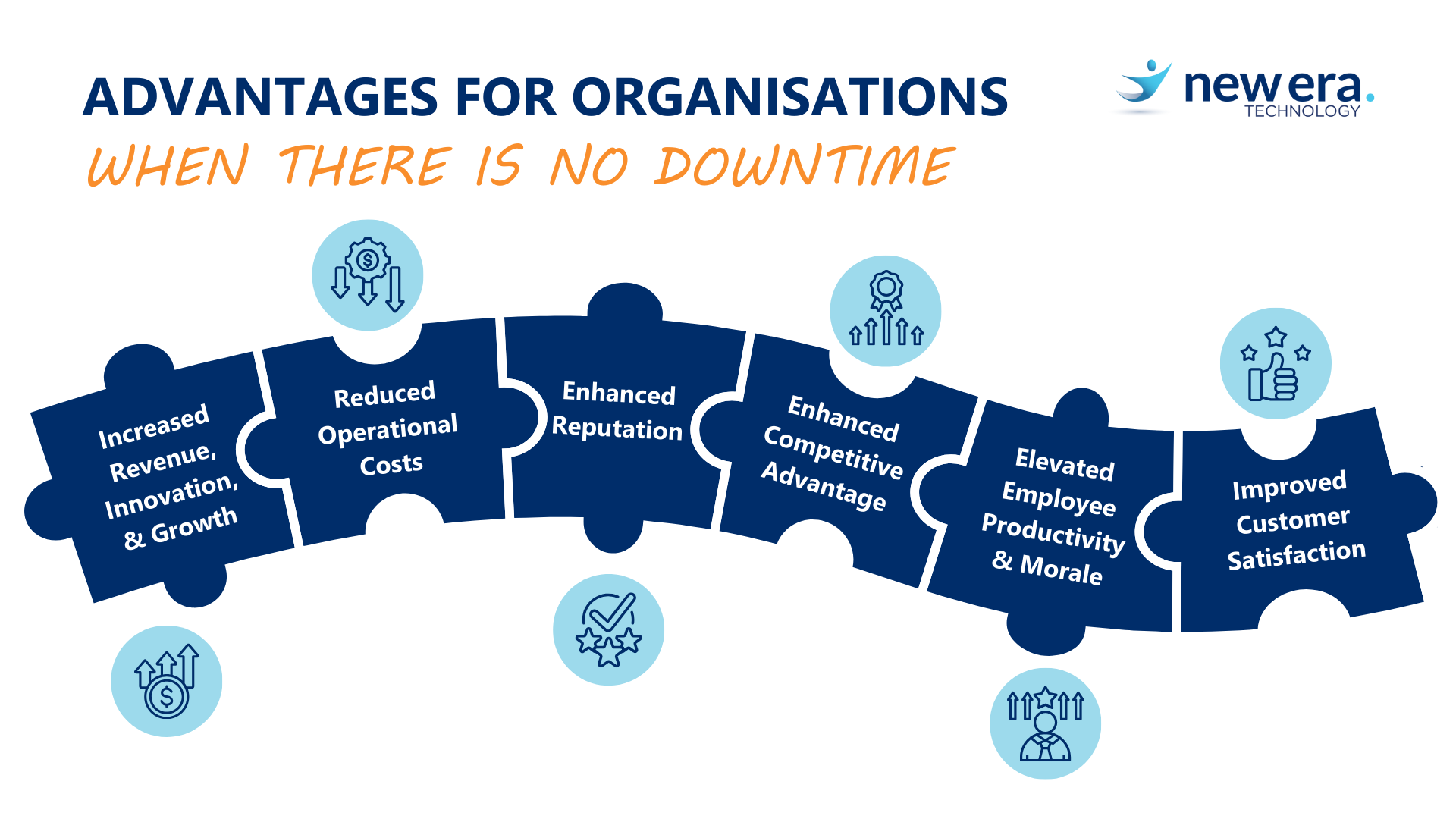
Ensure Business Reliability with Service Level Agreements (SLAs): Minimise Downtime, Maximise Confidence
Effectively managing and measuring downtime costs is crucial for any business.
Service Level Agreements (SLAs) help achieve this goal by setting expectations, defining downtime levels, and outlining penalties for breaches.
SLAs stress the importance of downtime management by providing guidelines on response and resolution times, and service quality. With clear SLAs, businesses can reduce unavailability, boost efficiency, and enhance customer satisfaction.
Violating SLAs can result in consequences for both service providers and customers. To enforce accountability, SLAs specify penalties and solutions for breaches, such as compensation, service credits, or expedited issue resolution.
By establishing these consequences upfront, SLAs motivate service providers to prioritise uptime and prompt issue resolution. Simply put, SLAs offer a framework for managing and reducing downtime costs.
New Era Guarantees Business Reliability through SLA Adherence
New Era operates by observing SLAs, allowing businesses to rely on them for setting expectations, monitoring performance, and handling downtime incidents efficiently.
By prioritising operations and utilising SLAs, companies can reduce financial and reputational risks during periods of unavailability.
Contact our friendly team today to discover how our services can drive your business growth.
Information for this blog post was sourced from Queue-it, Trilio, Diamond, and SolarWinds.

 Canada
Canada LATAM
LATAM New Zealand
New Zealand UAE
UAE United Kingdom
United Kingdom United States
United States




